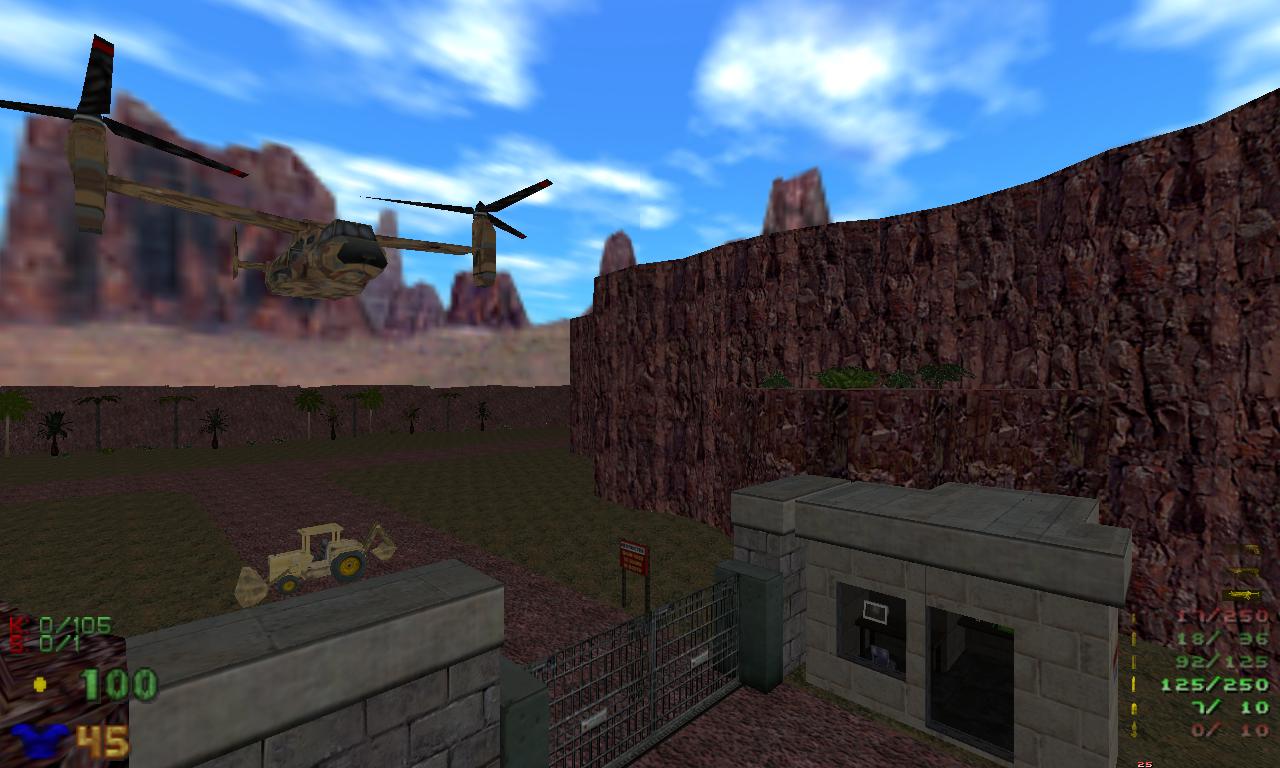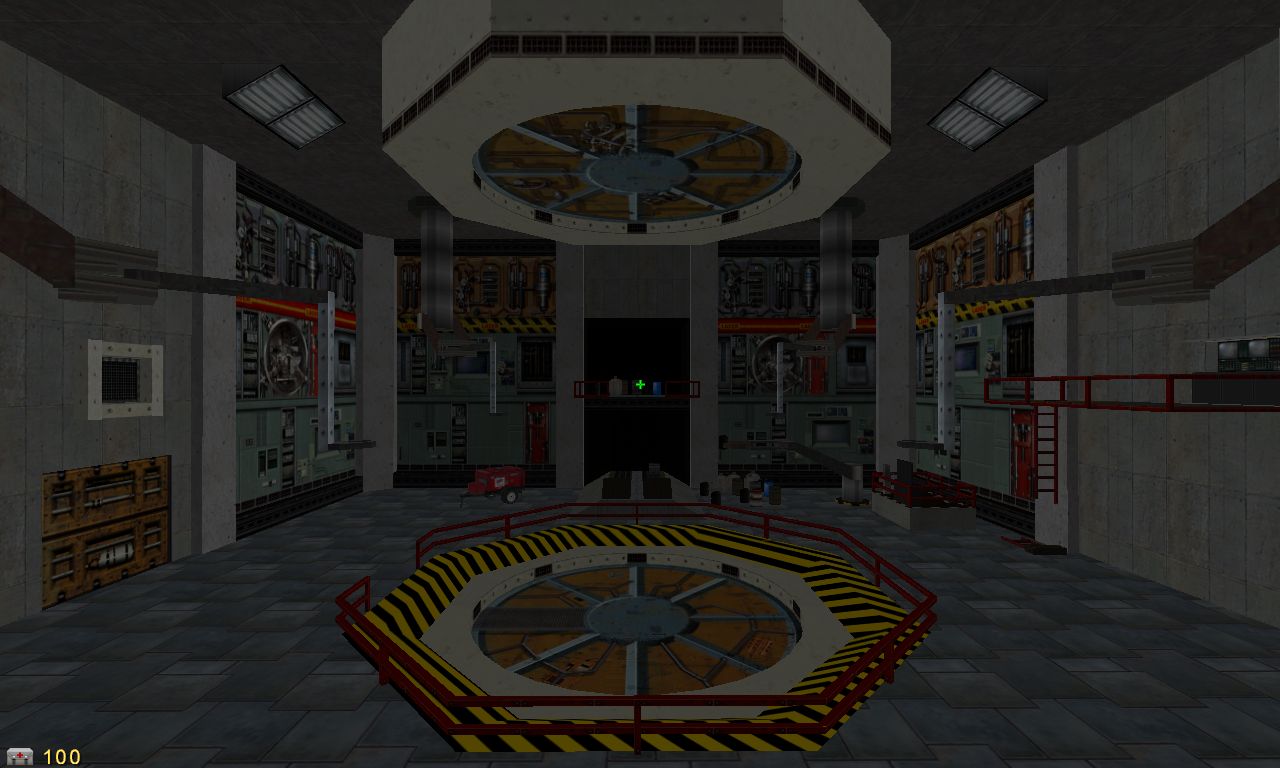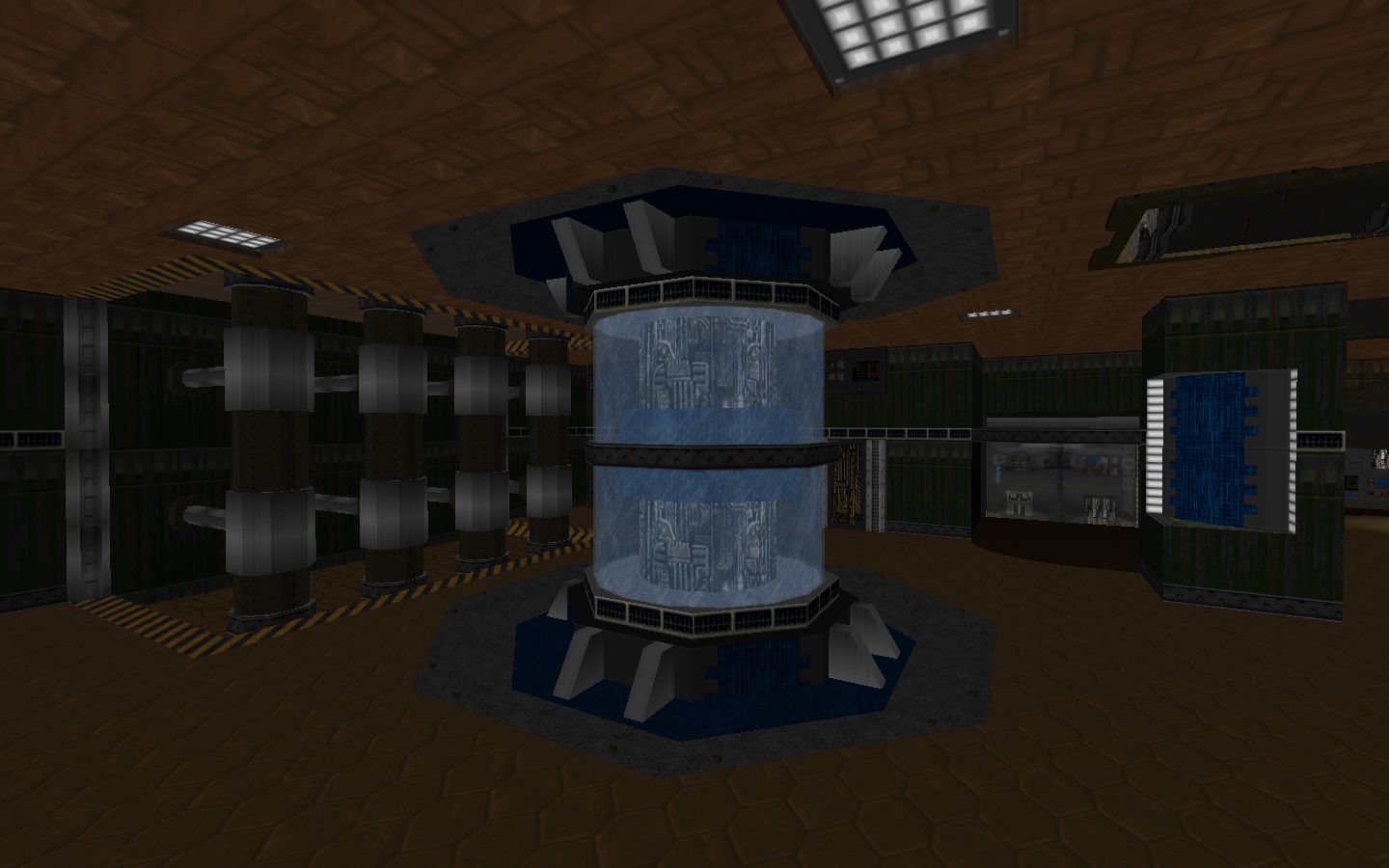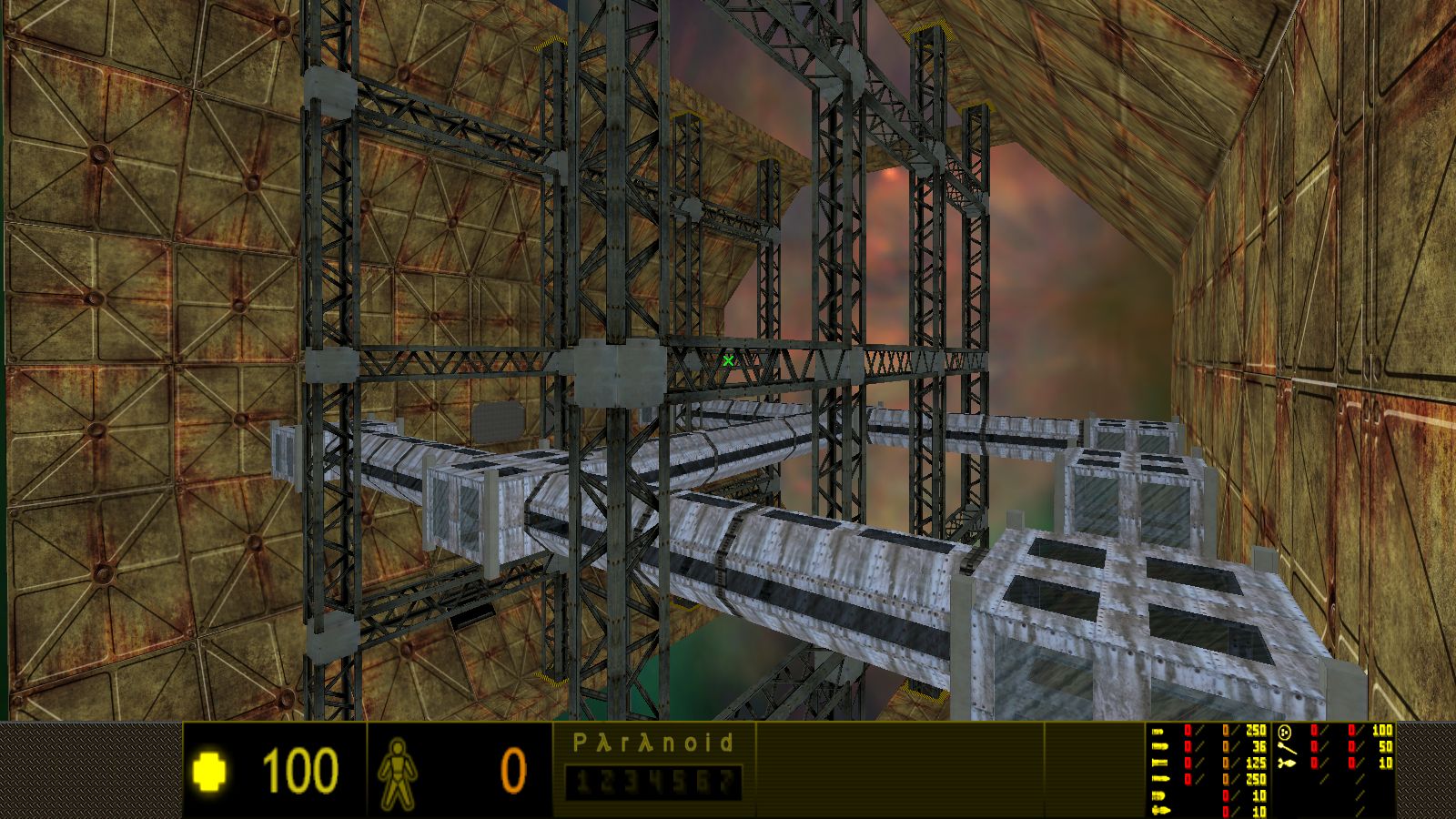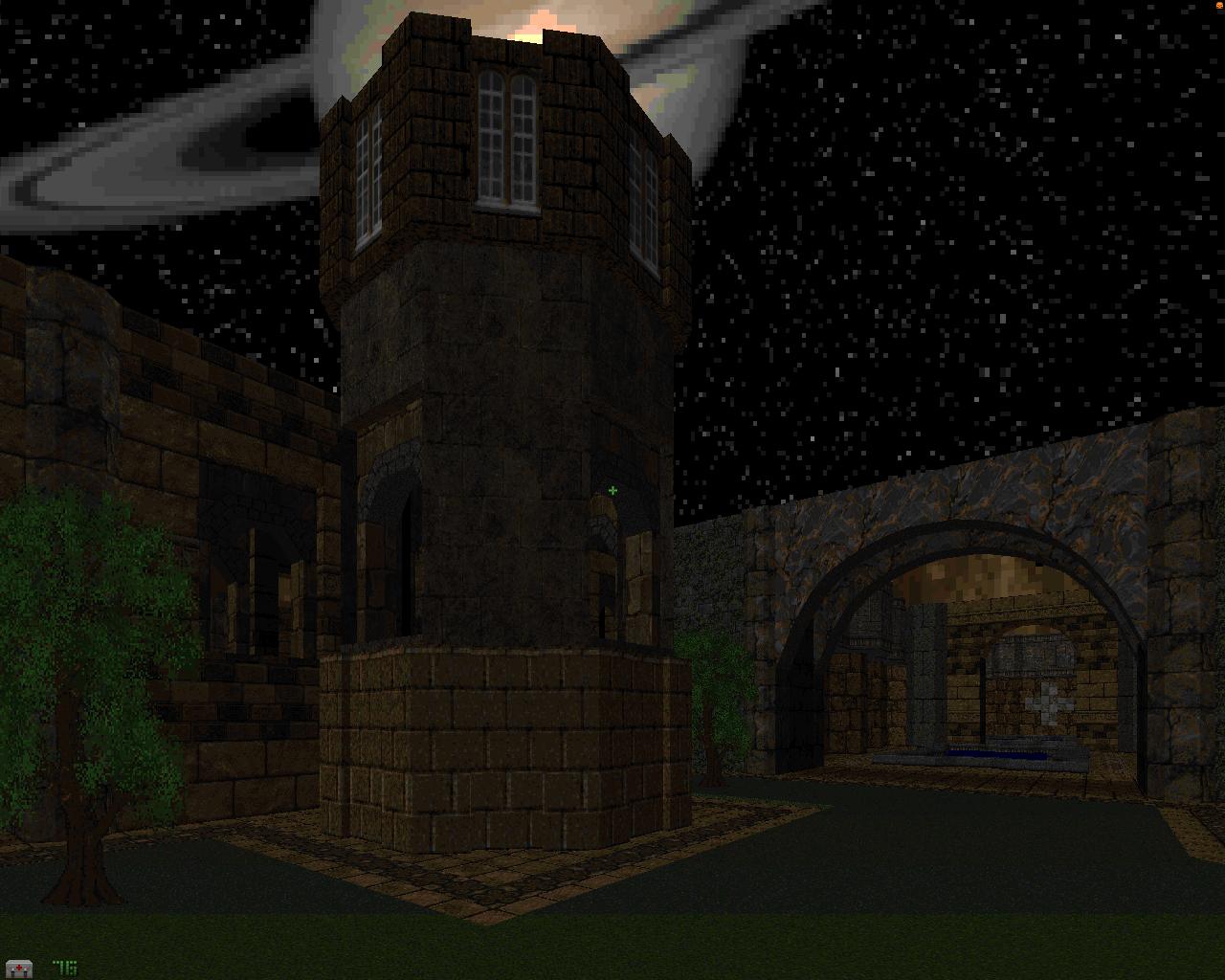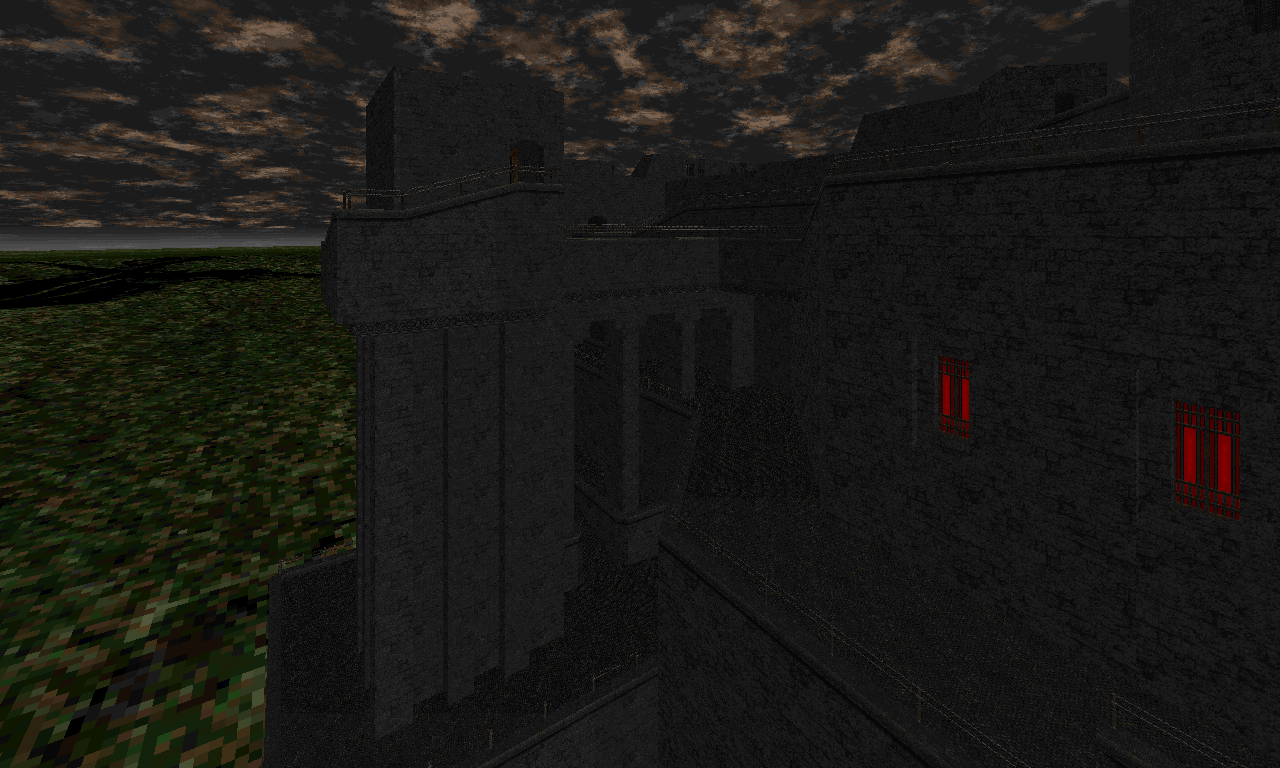Before I launch into the specifics of what makes a good DooM modification, let me add a couple of caveats. First, what follows is my opinion, which makes it inherently subjective. Second, modifications range from strictly maps (levels) or gameplay, to partial or total conversions. This article attempts to cover the gamut of the different types of mods.
I'll examine DooM mods in the context of the following:
A. Aesthetics
B. Level Design
C. Gameplay
D. Custom Weapons and Enemies
E. Other Considerations
A. Aesthetics
-
1. Theme. For stock (vanilla) DooM the most common themes appear to be tech/base, medieval, and hellish. But when creating a partial or total conversion, the sky appears to be the limit. Regardless, consistency of theme is an important element in the creating of an immersive experience. When designing a mod, authors that stay within the theme (unless the story-line indicates otherwise) tend to succeed in drawing a player into the game. That's not to say that some elements of one cannot be introduced into a map with a different theme (e.g., the selective use of MARBFAC textures in tech/base maps). But this ought to be done with some care.
2. Atmosphere. Many maps strive for a creepy atmosphere, with somewhat dimly-lit areas and the presence of monsters heard but not seen. Others go for reasonably well-lit areas, and even a brighter look to the map with new blue-sky textures, etc. Each approach works well, depending on the intention of the author.
3. Architecture. The better the architecture, the more pleased the audience is likely to be. However, do not sacrifice gameplay for architecture. Most buildings you create will have corridors. Avoid long, straight, and featureless corridors. Make the corridors turn and/or double back. Make them fork and branch out, so long as that does not interfere with the intended progression of the level. The same applies to rooms in the building: Avoid entirely orthogonal walls (i.e., walls with only 90-degree angles). Create angular surfaces and curved structures.
4. Detailing. Detailing is intended to making the map visually interesting. Avoid long, unbroken sections of wall, and utterly flat ceilings and floors. Add cross-beams on the ceiling, support pillars along the way, and recessed sections of wall. Where appropriate, add computer panels or demon faces or piping.
5. Lighting. Lighting enhances the mood of a map, and can impart a sense of realism to the game. Pools of light, skylights that let in beams from the outside, and flickering or blinking lights all add to the appeal of a map. In addition, the general rule of thumb is that indoor lighting needs to be varied depending on the presence (or absence) of light sources. A tunnel, for example, ought not be be uniformly-lit. Instead, the default light setting should be dark (e.g., 96 lighting units) with areas around each light source being brighter. Gradient lighting also lends the appearance of realism. In source ports that support them, the use of dynamic lights can greatly enhance the mood and design of maps.
6. Stock DooM Texturing. Texturing follows the same principles as Themes, above, particularly with regard to consistency. However, repetitive use of the same textures will make the map look bland. Instead, use contrasting textures to add visual appeal (e.g., SUPPORT3 can be used to break up long walls that use GSTONE1). In addition, make sure textures are properly aligned.
7. Custom Texturing. Custom textures can greatly enhance the appearance of a mod, and often go a long way in establishing the theme. In my opinion, one of the simplest but most effective texture switches is for the sky. This little change can dramatically alter the look and feel of the mod.
8. Custom Items. Many source ports support the use of models and voxels, which allow the modder to insert geometrically-complex objects into a map. For example, an electrical water pump is intricately-shaped, and cannot properly be replicated with sectors. Using a model will save the considerable amount of time required to recreate such objects via sectors, and will be far more visually appealing. As with everything else, custom items should be used in a manner that is consistent with the theme of the mod.
9. Custom Color Palette. The look and feel of DooM maps can be radically altered simply by using a different color palette. Skies, water, nukage, and slime can all be made to take on different hues. For example, Egyptian-themed mods rely on crisp, blue skies to create the "classic" desert atmosphere. The stock DooM palette does not support that shade of blue, and a custom palette is required.
-
1. Map Layout. This aspect of mod development has to do with game progression, and the various paths that might be available to the player. While there's nothing inherently wrong with a linear map, providing the player alternative paths to a given objective is often appreciated. The other notable aspect of the idGames DooM maps, and one that is worth emulating, is back-tracking. For example, a player takes a path to pick up a key and has to return along the same path. Only, upon the return journey there might be nasty surprises awaiting. Other examples of non-linearity include:
-
a. "Loops". A loop is a layout element that guides the player back to a previously seen or visited location. An example is where the player starts near a map's exit, completes a set of objectives, and returns along a different path to the exit. Such a path gives the illusion of non-linearity, while generally providing the player an unconfusing path.
b. "Reveals". You can make maps more interesting by revealing parts of the map that are not immediately accessible, but which the player can reach later (either as a necessary part of the progression, or as a reward for exploration). A great way to do this is to place a key that is initially unreachable but visible, and which opens a door nearby. Picking up the key allows the player to quickly go to the relevant door.
c. Intersecting Paths. This is a variation of a loop, where the player navigates sub-sections of a map, each time returning to the starting point of the mini-loop before proceeding to a newly-available path.
3. Switch Hunts. Many players abhor switch hunts, but many others enjoy it. If your objective is to create a sense of disorientation with frequent back-tracking, then, by all means, go for it. One way to mitigate excessive confusion on the part of the player, in source ports that allow it, is to use cameras to show what a switch does. Likewise, as in HeXen, you can use HUD (Heads-Up Display) messages to indicate the same thing.
4. Seamlessness. Some source ports support maps connected in a hub structure. This allows for two things: First, it allows the creation of vast, interconnected spaces that couldn't easily be built within a single map. (Think of the labyrinthine structure of the Black Mesa Complex in Half-Life.) Second, it allows the player to return to maps that the player has previously traversed, such as in HeXen.
5. Spatial Geometry. Avoid a map with the same height attributes throughout. In other words, make some rooms with higher ceilings or lower floors than others, make rooms that are higher up (accessible via stairs, elevators, or teleporters), etc. Add windows, especially to areas that the player will only access later in the map, or secret areas. In source ports that allow it, map-buiders are encouraged to create sloped areas, 3D constructs, swimmable water, and portals.
6. Secret Areas. Most players consider it fun and challenging to discover some or all secrets. Include secret areas in your maps whenever possible. Provide some sort of clue that a secret exists -- a deliberately misaligned texture, a razor-thin recessed area, a flickering light. Avoid hiding required keys or switches in secret areas, particularly difficult-to-find areas.
-
1. Balance. It's an axiom in the game-development world, but it bears repeating: Constantly strive for a balance. This means searching for the sweet spot between making a game too easy and too difficult - the "Goldilocks" zone. Of course, what is properly balanced for a seasoned player could be wildly difficult for other players. Therefore, it's a good idea to have play-testing done by people of different skill levels.
2. Surprises. Some maps, especially the creepy ones, will spring traps on the unsuspecting player, perhaps without warning. It's best, however, to give the player either a clue that there's a trap, enough health & ammo to deal with the trap, or a way out. The key is to make the player sweat without dooming him/her to failure.
3. Action. Some maps will have enemies sniping at you from a distance, forcing you to duck and hide until you are close enough to deal with them. Others will have hordes of enemies swarming around. Others will require you to run through or retreat or cause enemy in-fights. All approaches can work very well if implemented properly. Remember that first-person shooters (FPS) are generally intended to amp up the adrenaline levels of players. Therefore, periodically create situations where the player is required to take risks (for which an appropriate reward is granted).
4. Health/Armor/Weapons/Ammo Not too much, not too little. As always, keep the player on edge, but give him/her a chance.
5. Skill Levels. Not all players have the same skill. For wider appeal, skill (difficulty) levels should be implemented. Otherwise, in the text file specify which skill level the map was built for. The great news for DooM modders is that the game supports several skill levels. Therefore, if a player finds a map too difficult s/he can replay it at a lower skill level and still have the opportunity to enjoy the game. Accordingly, modders (particularly those that want to make highly challeging maps) ought to incorporate gameplay for each of the available difficulty levels, so that the game can be more widely enjoyed.
6. Replay Value. A good map will typically have a high replay value. In other words, people will want to play the level again and again. Among the elements contributing to high replay value are non-linear routes, secret areas that are visible but not easy to access, and varied types of battles. Another element that adds to replay value is to create different, possibly unique, paths for each skill level.
-
1. Custom Weapons. Many mods focus on replacement weapons for the stock DooM ones. Years ago, such replacements were mostly just graphic swaps, with no change in weapon behavior (although weapon behavior was sometimes altered using DeHacked). With the capabilities of source ports having expanded in recent years, however, creating custom weapons has become much easier. For example, ZDooM and its derivatives support DECORATE, which is a powerful behavior modding tool, and its even more powerful cousin, ZScript. Using these tools, it is possible to emulate the behavior of real-life weapons (e.g., requiring a gun to be reloaded periodically), just as it is possible to make fantasy, sci-fi, and utterly bizarre (pooper-shooter, anyone?) guns. Many mods produce variations on stock DooM weapons, which many would argue, provide just the right balance of limitations and power. The general rule you should follow is to avoid over-powered weapons that make the game too easy.
2. Custom Enemies. Just as with custom weapons, modders have been creating custom enemies for DooM since the advent of DeHacked. Nowadays, DeHacked has largely been side-lined by tools offered in source ports (although it should still be part of your tool-box if you want to create mods for stock DooM). In keeping with the guidelines for custom weapons, enemies should not be grossly over-powered, as this can result in frustrating gameplay. Of course, developing suitably-powered weapons to pit against the new enemies would make for an even more exciting gaming experience.
-
1. New Music. A significant part of the DooM community seems to appreciate new music, whether intended to go along with new levels or existing ones. And with the capabilities of source ports, new music no longer needs to be in midi (MUS) format. Formats such as MP3 and OGG are supported, allowing you to include high-fidelity (haven't heard that term since, uh, the seventies) versions of your custom music. One caveat, however: All the major DooM community forums and file repository (upload) sites prohibit distributing rips of commercially-published music. Therefore, if you want to include songs from, say, Megadeth's Rust in Peace album you can only do it by re-recording the music or converting it to midi/MUS.
2. New Sound Effects. New sound effects to accompany custom weapons or enemies can greatly increase the immersiveness of your mod. In addition, atmospheric sound effects also enhance a game. [Think back to when you first played HeXen and heard the skittering of the leaves on the ground, or the tinkle of breaking glass.] You can create an eerie mood with the sounds of moaning winds, or a bright mood with the sound of chirping birds. Also, with terrain features offered in many source ports, you can create a splashing sound when the player walks in water or a thud when the player drops to the ground below.
3. New Story. While the original DooM games have a satisfyingly solid feel, the story line is inarguably thin. Yes, the DooM Guy has a back-story, but the rest of the game is, essentially, one of slash and burn. Nowadays, mods can be built around a story-line, with new items and new objectives possible (see below). The story can be told through in introductory cut-scene and/or through periodic "mission briefings". This gives the player a sense of purpose beyond merely hacking and blasting her/his way through the maps.
4. New Type of Objectives. HeXen was a huge leap over Heretic and DooM in terms of missions and objectives. No longer were we limited to finding switches or locating exit doors. In keeping with a new story (see above) you can introduce objectives that deviate significantly from simply finding a key. For example, you might require the player to de-activate a communication network or to protect an asset until reinforcements arrive. These tools expand the gaming experience beyond the traditional DooM one.
5. Scripted Events. This device overlaps areas such as gameplay, story development, and mission objectives. You can create cut-scenes, interactions with non-player characters (NPC), fights between different classes of enemies, and so on. All of these can serve to advance (or hinder) the player's progression and to absorb the player into the game.
